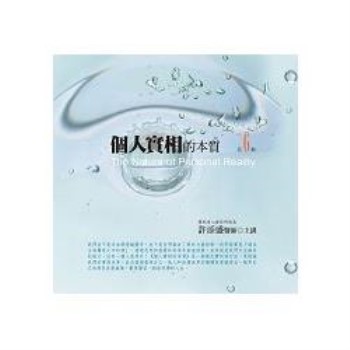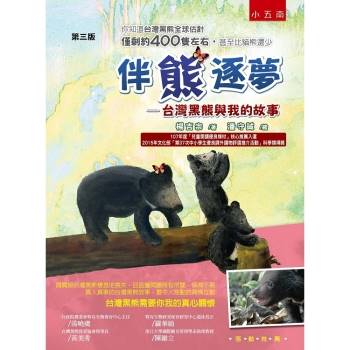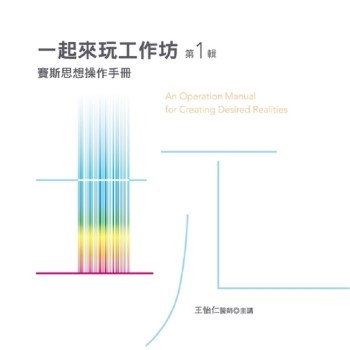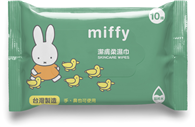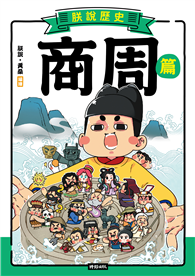◆三大特點:美國教育測驗中心(ETS)評選為一流學校的韓國頂尖高校學生一致推薦!
用生動有趣的圖片開啟記憶的鑰匙,相關的主題單字一次記牢!
「圖像記憶」是目前最合乎人類的大腦運作模式的記憶法,《英文單字小學堂─科學好好玩篇》附以全彩的活潑插畫,精準地表達單字意義,利用圖片引起讀者的好奇心與學習興趣;並用不同情境的插圖幫助讀者記憶,讓學習單字不再是點狀記憶,而是可以馬上聯想到其他的相關字彙。不同於坊間的填空測驗題,只是單純地用文字平鋪直述,讀者往往機械式地填出答案,久而就之,就漸漸對單字喪失敏銳度與記憶點,一但忘了就再也想不起來。《英文單字小學堂─科學好好玩篇》採用聯想式的看圖填空,依照圖片給的情境,和單字做聯結,只要遇到類似情境,單字自然而然浮現在腦海中,保證再也不會忘!
主題式編排,對具有關聯性的單字作綜合觀察
《英文單字小學堂─科學好好玩篇》收錄科學相關的英文字彙,不僅實用更具生活化,再依不同主題細分8大類:生命科學、地球科學、物質科學等等相關的科學字彙,一次學會!內容豐富多元,趣味十足且容易理解,利用單字間的關聯性,有系統、有效率的增加英文字彙!
你從沒聽過,學單字還可以長知識!
於每個單元的最後,介紹與各主題相關的有趣常識,如:發明家傳記、青蛙的生命週期、實驗時的安全守則等等,讓學單字不再是一成不變的背死書,在擴充生活實用單字的同時,也可一窺相關主題的全貌,更能激發讀者的求知慾與好奇心!
◆參考美國小學所主要使用的教材內容,與自然學科相互對照,再篩選出經常會出現的基本必備單字,並依據不同的主題來分門別類地進行整理,破除雙語教學的障礙,奠下良好的字彙能力。
雙語教學是近來國內頗盛的風氣,此一教學方式,讓學生可以在學習各科內容的同時,也一併接觸英文,是個能收一舉兩得之效的好方法。但坊間的英文單字書,卻都沒能因應此一英語教學變化,依舊讓學生制式地死背單字,使得學生的學習意願大大降低,《英文單字小學堂─科學好好玩篇》的出版動機正是要導正此觀念,用最活潑、愉快的方式,讓英文變成一種工具、一種溝通的方式,自然而然地融入生活當中。
◆利用簡單的教學步驟,聰明的編排方式,幫助你輕輕鬆鬆牢記單字!
《英文單字小學堂─科學好好玩篇》提供的教學方法,不僅僅適合雙語學校的英語老師輔助教學,更可提供補習班及家長作為課後補充教材,輕鬆增進學生的字彙量及聽力能力。增強實力4步驟step by step,單字再也不會忘!
Step 1看了就會!打開Unit Opener看著圖中的單字,與圖的情境做聯結。
Step 2聽了就會!跟著CD中的發音複誦,並瞭解單字的意義。
Step 3練了就會!用練習題與聽寫、填空,再次check是否已融會貫通。
Step 4讀了就會!加深印象,介紹精彩豐富的小常識,不僅學單字還可長知識!
單字再也不會忘!
作者簡介:
李永相◎著 許葳◎譯
【作者介紹】
■李永相
畢業自高麗大學英語教育學系,曾任首爾永登浦區的長薰高中英語教師一職。1985年時,獲得美國北卡羅來納州立大學格林史寶拉分校〈University of North Carolina─Greensboro〉社會學碩士學位。其後於1987~1993年之間,在芝加哥大學〈University of Chicago〉攻讀社會學博士課程。1994年回國後,在Pagoda外語補習班教授英文會話,同時也在Screen英語擔任過英文講師,現為民族史觀高中英語教師,不斷為了英語教育而奉獻努力。並兼任民族史觀高中教務主任,國際領袖活動指導
〈GLPS(Global Leadership Program)Director〉,校內國際組代表顧問。
【譯者介紹】
■許 葳
現為國立政治大學韓國語文學系四年級生,韓國慶熙大學交換學生,曾任雜誌社筆譯、遊戲公司翻譯、中韓口譯,目前為兼職筆譯。
章節試閱
【精選內文】
Motion and Force運動與力
motion (n.) 運動
The act of moving.
移動的動作。
We may move the car in a zigzag motion.
我們可以使汽車做曲線運動。
object (n.) 物體
A thing that you can see, hold, or touch.
讓人能看得到、握得住、摸得著的東西。
Put an object on one side of the balance.
把一個物體放在天秤的一邊。
speed (n.) 速率;速度
How fast something moves.
物體移動得有多快。
The car moved at a very fast speed.
那輛車以非常快的速度疾駛而過。
force (n.) 力
A push or a pull that makes something move.
能夠使物體移動的推力或拉力。
We use a force to move something.
我們用力去移動物體。
pull (n.) 拉力
A force that moves something closer to you.
一種使物體靠近的力量。
You can move something with a pull.
你可以藉由拉力來移動物體。
Unit Review
◆Draw lines to match.
pull 物體
object 拉力
fuel 燃料
◆Circle the correct one.
(1) A (pull, push) is a force that moves something away from you.
(2) Poles that are the same (repel, attract) each other.
(3) (Electricity, Gravity) makes the lights work.
◆Choose the answer.
(1) Iron is one kind of __________.
a pitch b metal c gravity d magnet
(2) A __________ is how high or how low a sound is.
a move b vibrate c repel d pitch
(3) A __________ is something that stores energy.
a magnet b fuel c battery d direction
◆ Find a vocabulary word that completes each sentence.
speed reflect pitch
(1) A mirror __________s light.
(2) The car moved at a very fast __________.
(3) A __________ means how high or how law a sound is.
◆Listen to the recorded sentences and fill in the blanks with correct words.
(1) Put an __________ on one side of the balance.
(2) A __________ can change an obiect’s position.
(3)__________ is another kind of energy.
(4) The __________ from the Sun keeps us warm.
(5) Can you tell me the __________ of the sound?
(6) Wood, natural gas, and oil are __________s.
Remember?
Please fill in the blanks. 填出下列空格的答案
__________ 推;推力
__________ 拉;拉力
__________ 反射
__________ 光
__________ 極
__________ 電池
__________ 排斥
__________ 吸引
__________ 磁鐵
Cooldown Section
Kid Inventor Richie Stachowski
A kid can invent a useful thing.
Kid inventor Richie Stachowski made a new tool.
He was on vacation with his family in Hawaii.
He could not talk to his father underwater.
So when he got back home, he started to think about a new tool.
He tried different ways to make sound in water.
Then he made a new tool called the Water Talkie.
Today people use it to talk under water.
He was only 10 years old when he made it.
小小發明家──里奇‧史塔哥夫斯基
小朋友也能發明出有用的東西。
身為小小發明家的里奇‧史塔哥夫斯基,就發明出了一項新工具。
當時他和他的家人一起在夏威夷度假。
他在水裡沒辦法跟爸爸說話。
於是他回家以後,便開始思考如何創造一項新工具。
里奇用了許許多多的方法,嘗試要在水中發出聲音。
後來他發明出了叫做「Water Talkie」的東西。
現在人們都使用它來在水裡講話。
里奇完成發明的那一年,他只有十歲而已。
【精選內文】
Motion and Force運動與力
motion (n.) 運動
The act of moving.
移動的動作。
We may move the car in a zigzag motion.
我們可以使汽車做曲線運動。
object (n.) 物體
A thing that you can see, hold, or touch.
讓人能看得到、握得住、摸得著的東西。
Put an object on one side of the balance.
把一個物體放在天秤的一邊。
speed (n.) 速率;速度
How fast something moves.
物體移動得有多快。
The car moved at a very fast speed.
那輛車以非常快的速度疾駛而過。
force (n.) 力
A push or a pull that make...
目錄
Unit 1 為科學做準備(一)──我想成為科學家
Preparing for Science One
16 Unit Opener
18 Vocabulary
26 Unit Review
30 Remember?
32 Cooldown Section
Unit 2 為科學做準備(二)──實驗器材備齊囉
Preparing for Science Two
34 Unit Opener
36 Vocabulary
42 Unit Review
46 Remember?
48 Cooldown Section
Unit 3 生命科學(一)──原來青蛙是兩棲類
Life Science One
50 Unit Opener
52 Vocabulary
58 Unit Review
62 Remember?
64 Cooldown Section
Unit 4 生命科學(二)──先有蛹還是先有蝴蝶?
Life Science Two
66 Unit Opener
68 Vocabulary
76 Unit Review
80 Remember?
82 Cooldovvn Section
Unit 5 地球科學(一)──我是地理專家
Earth Science One
84 Unit Opener
86 Vocabulary
92 Unit Review
96 Remember?
98 Cooldown Section
Unit 6 地球科學(二)──颶風強還是龍捲風強?
Earth Science Two
100 Unit Opener
102 Vocabulary
108 Unit Review
112 Remember?
114 Cooldown Section
Unit 7 物質科學(一)──水結冰是物理變化還是化學變化?
Physical Science One
116 Unit Opener
118 Vocabulary
126 Unit Review
130 Remember?
132 Cooldown Section
Unit 8 物質科學(二)──十歲小孩也可以當發明家
Physical Science Two
134 Unit Opener
136 Vocabulary
144 Unit Review
148 Remember?
150 Cooldown Section
154 Answers
162 Index
Unit 1 為科學做準備(一)──我想成為科學家
Preparing for Science One
16 Unit Opener
18 Vocabulary
26 Unit Review
30 Remember?
32 Cooldown Section
Unit 2 為科學做準備(二)──實驗器材備齊囉
Preparing for Science Two
34 Unit Opener
36 Vocabulary
42 Unit Review
46 Remember?
48 Cooldown Section
Unit 3 生命科學(一)──原來青蛙是兩棲類
Life Science One
50 Unit Opener
52 Vocabulary
58 Unit Review
62 Remember?
64 Cooldown Section
Unit 4 生命科學(二)──先有蛹還是先有蝴蝶?
Life Science Two
66 U...

